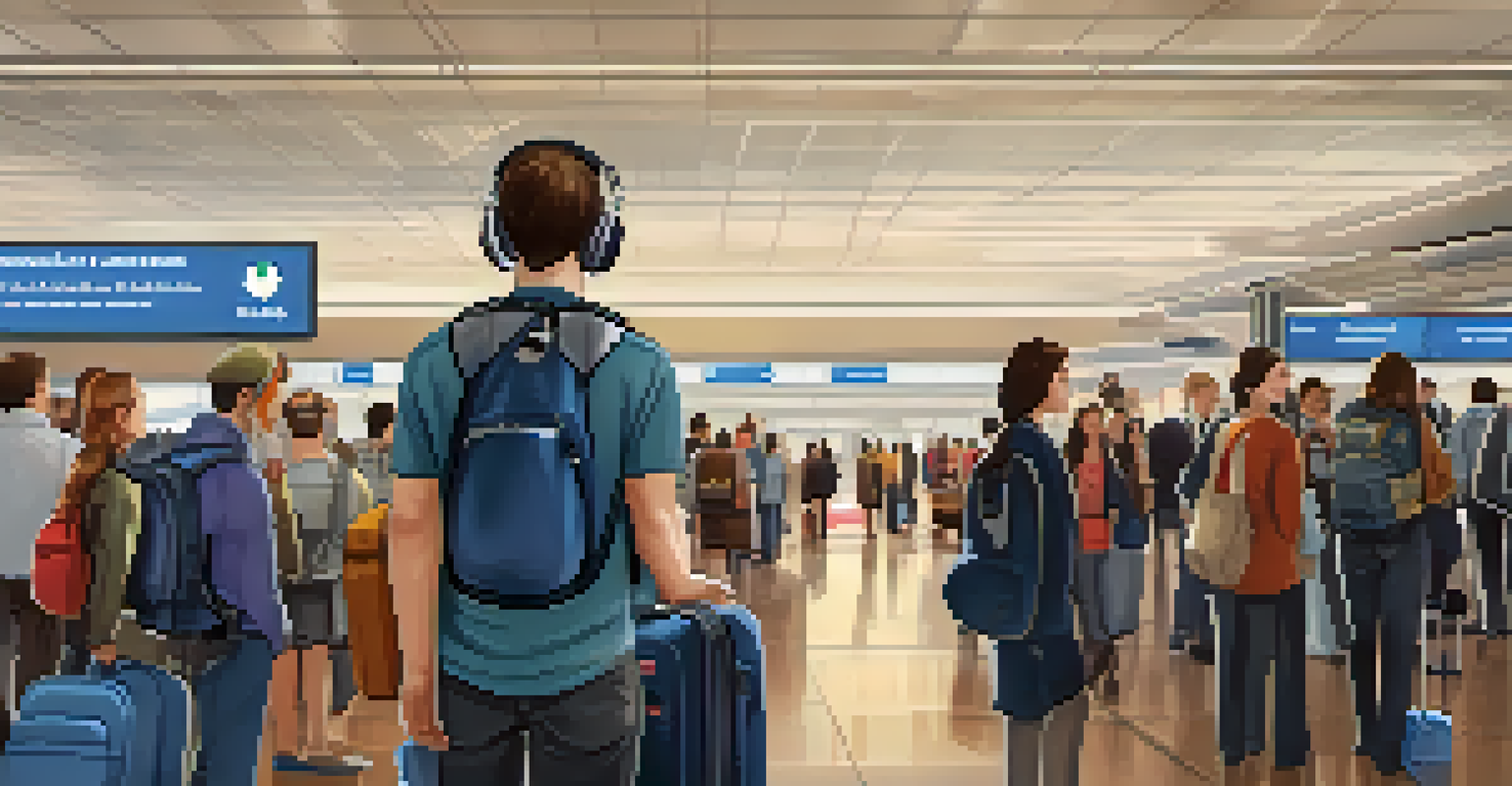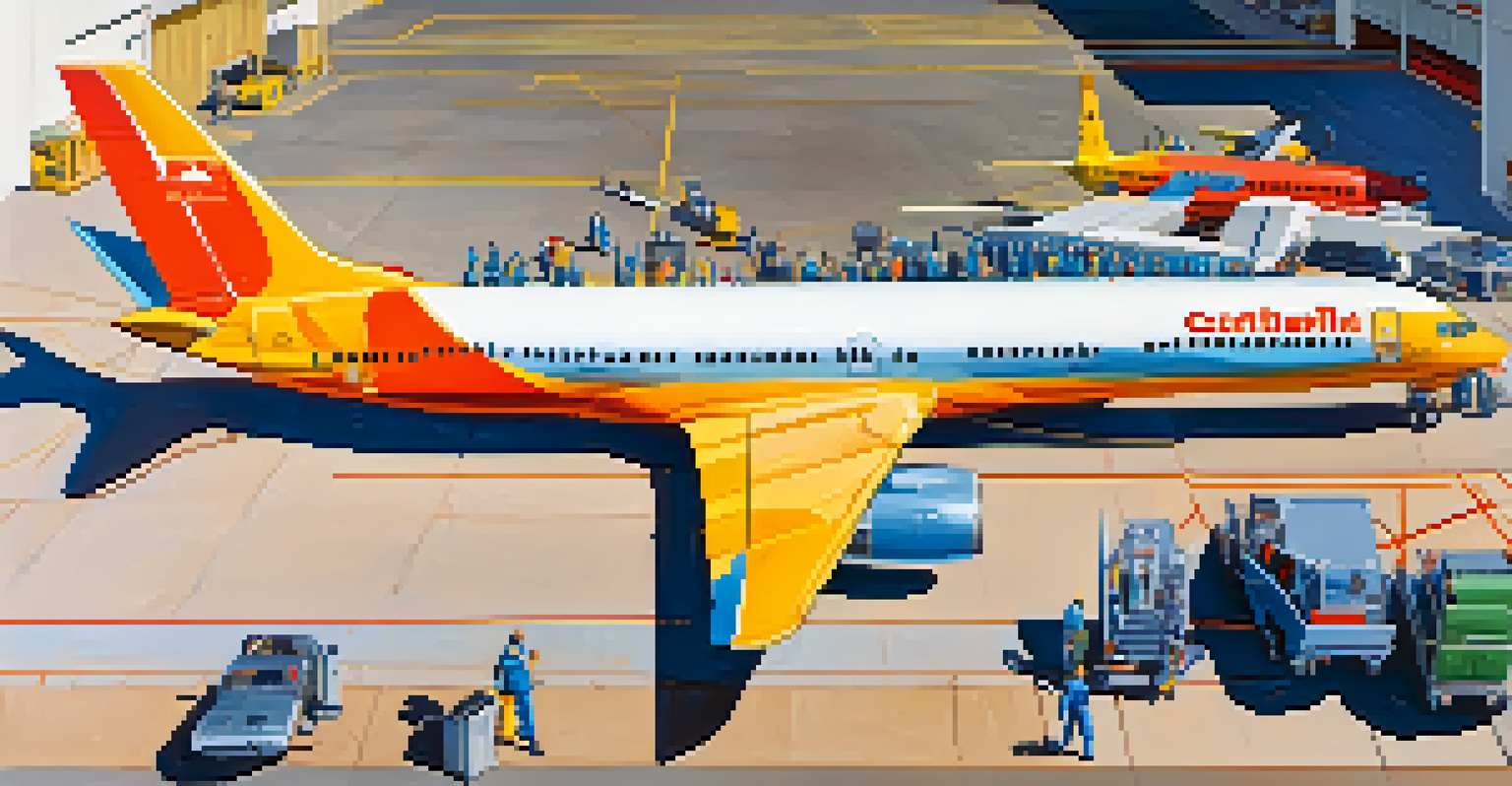Understanding Boarding Procedures for Stress-Free Flights

Why Understanding Boarding Procedures Matters
Navigating the airport can be overwhelming, especially if you’re not familiar with boarding procedures. Knowing what to expect can turn a stressful experience into a more relaxed one. It can help you feel more in control and prepared for your journey.
Traveling – it leaves you speechless, then turns you into a storyteller.
When you understand the boarding process, you can plan your time better, ensuring you arrive at the gate on schedule. This not only reduces anxiety but also gives you time to grab that last-minute snack or souvenir before you board. Plus, you’ll avoid the chaos of last-minute rushes.
Ultimately, being informed about boarding procedures allows you to enjoy your flight more. You can focus on the excitement of your destination instead of worrying about logistics, making your travel experience much more enjoyable.
Types of Boarding Procedures Explained
Airlines often use different boarding methods, such as zone boarding or back-to-front boarding. Zone boarding involves groups boarding the plane in specific sections, which helps organize the flow of passengers. This method can reduce congestion in the aisles and make boarding smoother.

Back-to-front boarding is another common method, where passengers seated in the rear of the plane board first. This system is designed to minimize the time spent waiting in the aisle, allowing for a quicker boarding process. However, it can sometimes lead to confusion if passengers don’t pay attention to their boarding group.
Master Boarding Procedures
Understanding boarding procedures can reduce stress and help you enjoy your travel experience.
Understanding these methods can help you determine when to line up for your flight. Being aware of the boarding strategy used by your airline can save you time and help you find your seat more efficiently.
Preparing for Boarding: What to Bring
Before you board, make sure you have your essentials ready to go. This includes your boarding pass, ID, and any necessary travel documents. Having these items easily accessible can save you from fumbling through your bag at the gate.
The journey of a thousand miles begins with one step.
Consider packing a small carry-on with items that will keep you comfortable during your flight, like a neck pillow or headphones. This way, you can easily reach for them once you’re seated, enhancing your in-flight experience. Remember, less is often more when it comes to carry-on luggage!
Additionally, be mindful of any restrictions on liquids or items in your carry-on. Familiarizing yourself with TSA guidelines can help you avoid potential delays during the security screening and boarding process.
Navigating the Airport: From Check-In to Gate
Once you’ve checked in, it’s time to navigate the airport. Pay attention to the airport signs that indicate your gate number and any potential changes. These signs are your best friends, guiding you through the sometimes maze-like terminals.
If you have time, explore the shops and restaurants in the terminal. This can offer a nice distraction before your flight and help you relax. Just be sure to keep an eye on the time so you don’t miss your boarding announcement!
Prepare Essentials for Boarding
Having your boarding pass, ID, and travel documents ready can streamline the boarding process.
Finally, listen for announcements regarding your flight. Airlines usually provide updates about boarding, potential gate changes, or delays. Staying informed will help you feel more at ease as your departure time approaches.
Tips for a Smooth Boarding Experience
Arriving early is one of the best ways to ensure a smooth boarding experience. Getting to the airport with plenty of time allows you to handle any unexpected issues, like long security lines or last-minute gate changes. This can significantly reduce stress.
Another helpful tip is to stay organized. Keep your boarding pass and ID in a designated pocket, so you can quickly access them when needed. A little organization goes a long way in avoiding last-minute scrambling.
Lastly, be patient and polite during the boarding process. Everyone is in the same boat, and kindness can make the experience more pleasant for everyone involved. Remember, we’re all just trying to get to our destinations!
Understanding Your Seat Assignment
Seat assignments can sometimes feel like a puzzle, but understanding them can enhance your flying experience. Your seat number typically follows a format, such as 12A or 25B, indicating the row and position in the plane. Familiarizing yourself with this can help you locate your seat quickly.
If you’re traveling with others, check if your seats are together. Many airlines allow you to select seats during booking, so if you want to sit next to your travel companions, make sure to do this in advance. Being seated together can make the flight much more enjoyable.
Stay Informed at the Airport
Paying attention to announcements and airport signs ensures a smooth transition from check-in to your gate.
Lastly, consider the benefits of different seat types. For example, aisle seats offer easier access to the restroom, while window seats provide lovely views. Knowing your preferences can make a significant difference in your comfort during the flight.
What to Expect Once You Board the Plane
Once you’ve boarded, the flight crew will welcome you aboard and guide you to your seat. It’s a good idea to stow your luggage quickly in the overhead bins or under the seat in front of you to allow other passengers to do the same. This helps keep the aisles clear and the boarding process moving smoothly.
After settling in, take a moment to familiarize yourself with the safety features of the aircraft. Pay attention to the safety demonstration, and be sure to know where your nearest exit is located. It’s all about ensuring everyone’s safety, and being aware can make a big difference.

Finally, once you’re seated, take a deep breath and relax. You’ve made it through the most stressful parts of travel, and now it’s time to enjoy your flight. Grab a book, listen to music, or simply gaze out the window as you begin your journey.